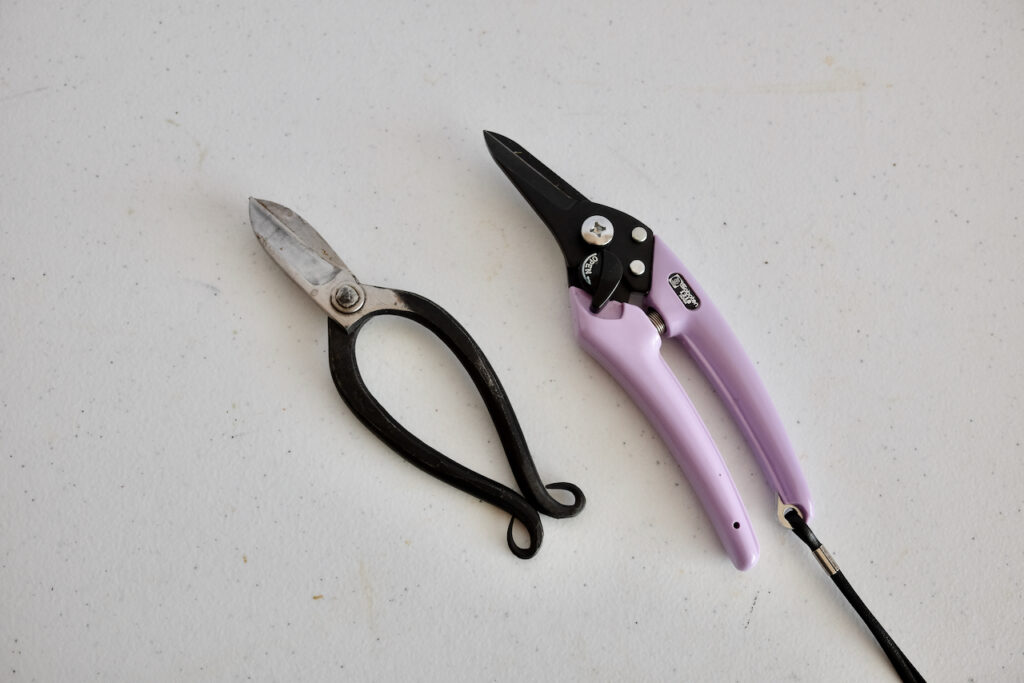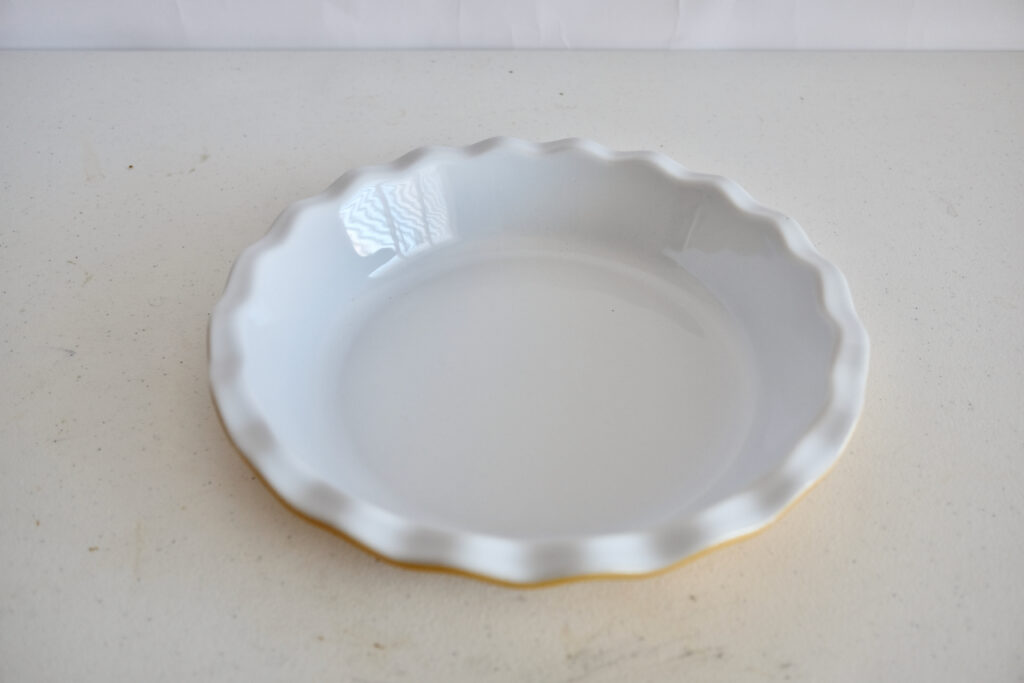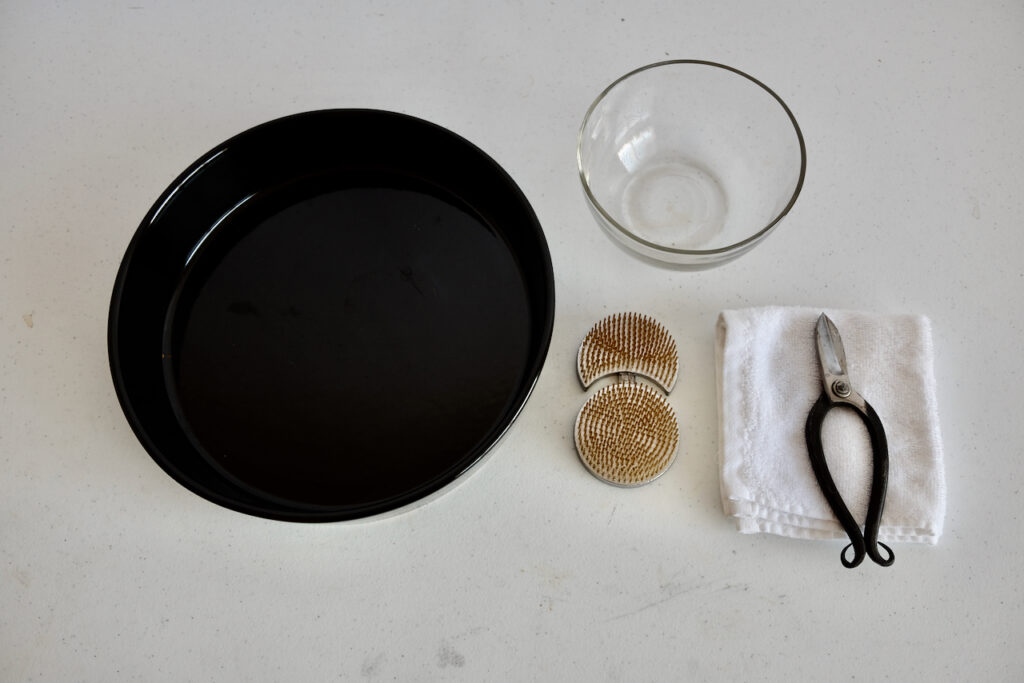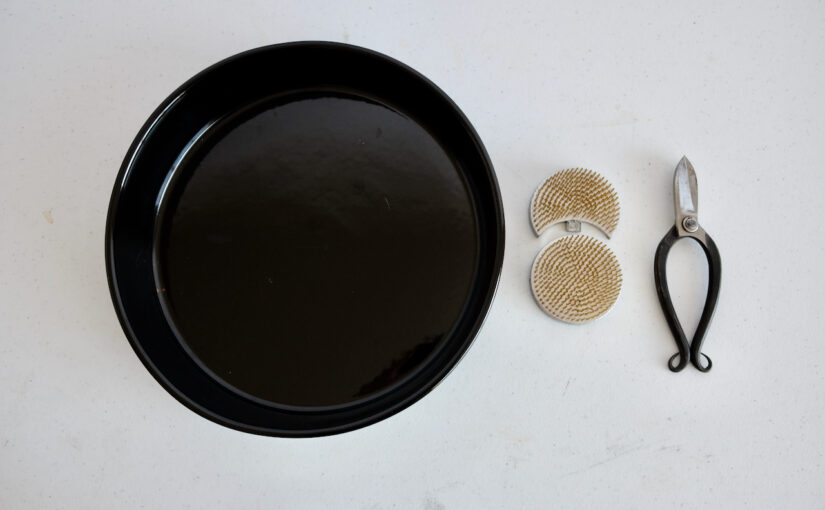Try Ikebana at home!
Photo by Author Akemi Sagawa
In my previous post, I introduced to you what Ikebana is. Originating in Japan, Ikebana is the art of flower arrangement. Also in my previous post, I listed 5 benefits of practicing Ikebana. Does it make you feel like trying it at home? Great! You want to give a new life to flowers!
Now, let me share with you what you need to prepare. What tools do you need?
Here is a list of tools you need for Ikebana.
Three Must-Haves
In order to try Ikebana, you need at least these three items:
Scissors
You need to cut branches and flowers, hence the first tool you need is a pair of scissors. The most common type is called Ikenobo hasami (hasami means scissors in Japanese). As you see in the photo above, the tip of the handles is curled up, giving appropriate weight on the handles. They are mainly made of iron or stainless steel. The size is about 6-7 inches long.

If such type of scissors is not available, don’t worry. A pair of garden pruning shears like the one shown above will work. Scissors you use for office work, however, wouldn’t be appropriate. Remember, branches are much harder and thicker than paper.
Kenzan
The pin frog to place the stems and flowers is called Kenzan. For the container with 12 inches diameter, a round Kenzan with 2.5 – 3 inches in diameter would be appropriate.

There are varieties of shapes and sizes of Kenzan. The Kenzan shown in the photo above is called Sun and Moon. I recommend this type for beginners.
Sometimes the branch you use may be so heavy that you will need some weight to avoid the heavy branch from tipping over. The moon part of the Kenzan can be a good counterweight in such a case.
Container
A round, shallow, flat-bottom container as shown in the photo above is most versatile for a beginner. Twelve inches in diameter is a good size. A square or rectangle shape will work, too. Any material would do, either ceramic, glass, or plastic.

If you can’t find any container dedicated to Ikebana, don’t worry. A pie dish in your kitchen is a great substitute. Make sure there are no holes or leakage!

Also Need to Have
Small bowl
You fill the small bowl with water and keep it beside the container. Whenever you cut a stem, you cut it under water. A bowl of 4-5 inches in diameter will be large enough.
Towel
In order to keep your scissors from rusting, you want to wipe out water from the blades after you cut stems. An old hand towel will be handy.
Nice to Haves (later, but not now)
Those items listed above are all you need to start Ikebana. As you keep practicing it, the next thing you want to add is a tall, slim container. With two containers, one flat and one tall, your Ikebana repertoire will drastically expand.
As you further advance your skills, you will find yourself adding such items below in your Ikebana tool kit: Wires, pins, staples, pliers, gloves, nails, hammers, etc.
